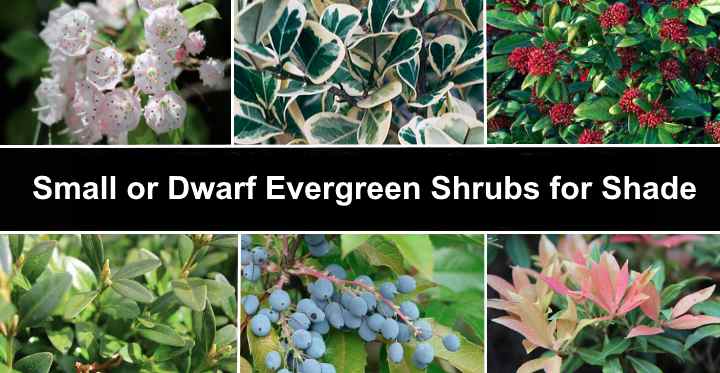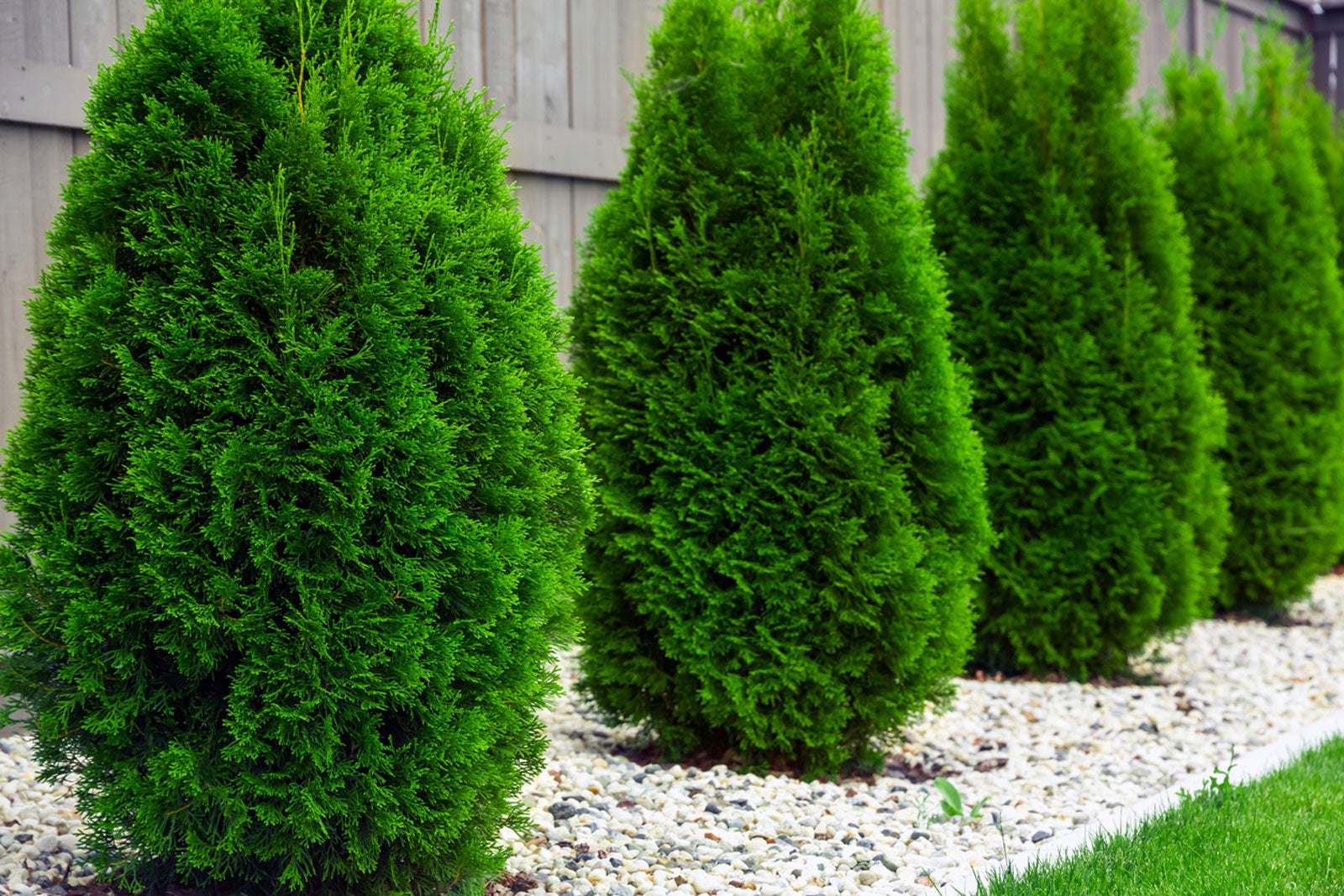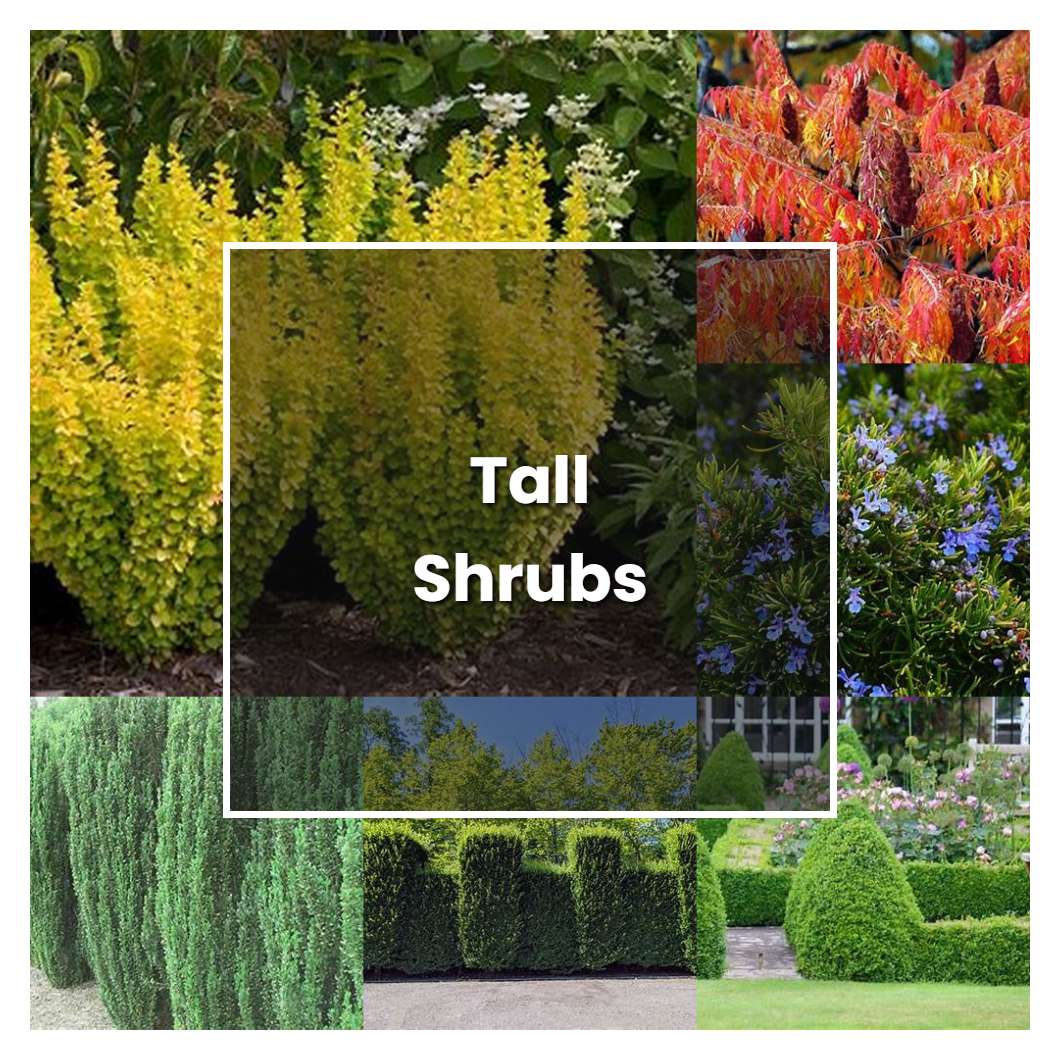How to Choose the Perfect Tall Shrubs for Shaded Areas
Gardening in shaded areas can be a challenge, but incorporating tall shrubs can add depth and texture to your outdoor space. When selecting shrubs for shaded areas, it’s essential to choose varieties that thrive in low-light conditions. Tall shrubs that grow in shade can provide a sense of enclosure, create a natural screen, and add visual interest to your garden.
Before selecting tall shrubs for your shaded area, consider the level of shade your garden receives. If your garden receives partial shade, you can opt for shrubs that prefer partial shade to full sun. However, if your garden is heavily shaded, you’ll want to choose shrubs that are tolerant of deep shade. Some popular tall shrubs that grow in shade include Hydrangea, Rhododendron, and Viburnum.
When choosing tall shrubs for shaded areas, consider the mature height and spread of the plant. You’ll want to select shrubs that will grow to the desired height and width, without overcrowding the space. Also, consider the soil type and moisture levels in your garden, as some shrubs prefer well-draining soil or consistent moisture.
In addition to their aesthetic appeal, tall shrubs that grow in shade can also provide a range of benefits, including improved air quality, reduced noise pollution, and increased biodiversity. By incorporating these shrubs into your garden design, you can create a thriving and sustainable ecosystem.
Some key characteristics to look for when selecting tall shrubs for shaded areas include:
- Adaptability to low-light conditions
- Mature height and spread
- Soil type and moisture preferences
- Aesthetic appeal, including foliage, flowers, and texture
By considering these factors and choosing the right tall shrubs for your shaded area, you can create a beautiful and thriving garden that provides a range of benefits for you and the environment.
Top Picks for Tall Shrubs that Flourish in Shade
When it comes to selecting tall shrubs that grow in shade, there are several options to consider. Here are some top picks that are known to thrive in shaded areas:
Hydrangea – This popular shrub produces large, showy flowers in shades of pink, blue, and white. It can grow up to 6 feet tall and 4 feet wide, making it a great option for adding a dramatic pop of color to shaded areas.
Rhododendron – With over 1,000 species to choose from, Rhododendron is a versatile shrub that can thrive in a range of shaded conditions. It produces vibrant flowers in shades of pink, purple, and white, and can grow up to 8 feet tall.
Viburnum – This low-maintenance shrub produces white or pink flowers in the spring, followed by red berries in the fall. It can grow up to 10 feet tall and 6 feet wide, making it a great option for adding structure and texture to shaded areas.
Boxwood – This evergreen shrub is a great option for adding year-round interest to shaded areas. It can be pruned to maintain a compact shape, and can grow up to 6 feet tall and 4 feet wide.
Weigela – This flowering shrub produces trumpet-shaped flowers in shades of pink, red, and white. It can grow up to 6 feet tall and 4 feet wide, making it a great option for adding a pop of color to shaded areas.
These are just a few examples of the many tall shrubs that can thrive in shaded areas. When selecting a shrub, be sure to consider factors such as mature size, soil type, and moisture levels to ensure you choose the right one for your garden.
Understanding the Different Types of Shade and How to Use Them
When it comes to gardening in shaded areas, it’s essential to understand the different types of shade and how to use them to your advantage. Shade can be categorized into three main types: partial shade, full shade, and dappled shade.
Partial Shade – This type of shade receives direct sunlight for 4-6 hours a day. Tall shrubs that grow in partial shade, such as Hydrangea and Weigela, can thrive in these conditions. When selecting shrubs for partial shade, look for varieties that can tolerate some direct sunlight.
Full Shade – This type of shade receives little to no direct sunlight. Tall shrubs that grow in full shade, such as Rhododendron and Viburnum, can thrive in these conditions. When selecting shrubs for full shade, look for varieties that are tolerant of deep shade.
Dappled Shade – This type of shade receives filtered sunlight through trees or other obstructions. Tall shrubs that grow in dappled shade, such as Boxwood and Holly, can thrive in these conditions. When selecting shrubs for dappled shade, look for varieties that can tolerate some direct sunlight and shade.
To assess the level of shade in your garden, observe the area throughout the day. Take note of the amount of direct sunlight the area receives and the time of day it receives it. This will help you determine the type of shade your garden receives and choose the right tall shrubs that grow in shade.
When using tall shrubs in shaded areas, consider the following tips:
- Choose shrubs that are tolerant of the type of shade your garden receives.
- Plant shrubs in a location that receives the right amount of sunlight.
- Use a mix of shrubs with different textures and growth habits to add depth and interest.
- Consider the mature size of the shrub and leave enough space for it to grow.
By understanding the different types of shade and how to use them, you can create a beautiful and thriving shade garden using tall shrubs that grow in shade.
Designing a Shade Garden with Tall Shrubs
Designing a shade garden with tall shrubs can be a rewarding experience, as it allows you to create a beautiful and functional outdoor space. When designing a shade garden, it’s essential to consider the mature size of the shrubs, as well as their growth habits and textures.
To create a layered look in your shade garden, consider using a combination of tall shrubs, perennials, and groundcovers. This will add depth and interest to your garden, and create a sense of visual appeal. For example, you could plant a tall shrub like Hydrangea or Rhododendron in the back of the garden, and then add a layer of perennials like Hostas or Ferns in the middle. Finally, add a layer of groundcovers like Creeping Thyme or Vinca minor to fill in any gaps and create a cohesive look.
Incorporating different textures into your shade garden can also add visual interest and depth. For example, you could combine the smooth leaves of a Hydrangea with the fern-like foliage of a Rhododendron. You could also add some ornamental grasses or bamboo to create a sense of movement and texture.
When designing a shade garden, it’s also essential to consider the amount of sunlight the area receives. If the area receives partial shade, you can use a combination of tall shrubs and perennials that thrive in partial shade. If the area receives full shade, you can use a combination of tall shrubs and groundcovers that thrive in full shade.
Here are some examples of successful shade garden designs:
- A woodland garden featuring tall shrubs like Rhododendron and Hydrangea, combined with perennials like Ferns and Hostas.
- A shade garden featuring a combination of tall shrubs like Viburnum and Boxwood, combined with groundcovers like Creeping Thyme and Vinca minor.
- A shade garden featuring a focal point like a large tree or a statue, surrounded by a combination of tall shrubs and perennials.
By considering the mature size of the shrubs, growth habits, textures, and amount of sunlight, you can create a beautiful and functional shade garden that showcases the beauty of tall shrubs that grow in shade.
Caring for Tall Shrubs in Shade: Tips and Tricks
Caring for tall shrubs in shade requires attention to their specific needs, including watering, fertilizing, and pruning. By following these tips and tricks, you can keep your tall shrubs healthy and thriving in shaded areas.
Watering – Tall shrubs in shade require consistent moisture, especially during the first year after planting. Water them deeply once or twice a week, depending on weather conditions. Avoid overwatering, which can lead to root rot and other problems.
Fertilizing – Feed your tall shrubs in shade with a balanced fertilizer in the spring and summer months. Avoid fertilizing in the fall, as this can promote new growth that may not have time to harden off before winter.
Pruning – Prune your tall shrubs in shade regularly to maintain their shape and promote healthy growth. Remove any dead or damaged branches, and cut back overgrown branches to encourage new growth.
Here are some additional tips for caring for tall shrubs in shade:
- Mulch around the base of the shrubs to retain moisture and suppress weeds.
- Monitor the shrubs for pests and diseases, and take action promptly if you notice any problems.
- Provide support for tall shrubs that may need it, such as staking or caging.
By following these tips and tricks, you can keep your tall shrubs in shade healthy and thriving. Remember to be patient and observant, as the specific needs of your shrubs may vary depending on the specific conditions of your garden.
Some common problems to watch out for when caring for tall shrubs in shade include:
- Overwatering, which can lead to root rot and other problems.
- Underwatering, which can cause stress and reduce growth.
- Inadequate pruning, which can lead to overgrowth and reduce the shrub’s overall health.
By being aware of these potential problems and taking steps to prevent them, you can keep your tall shrubs in shade healthy and thriving for years to come.
Using Tall Shrubs to Create a Sense of Enclosure and Intimacy
Tall shrubs can be used to create a sense of enclosure and intimacy in shaded areas, making them perfect for creating cozy nooks and private spaces. By strategically placing tall shrubs, you can define different areas of your garden and create a sense of seclusion.
One way to use tall shrubs to create a sense of enclosure is to plant them in a circular pattern, creating a sense of containment and intimacy. This can be especially effective in small gardens, where space is limited. By planting tall shrubs in a circular pattern, you can create a sense of seclusion and make the space feel more private.
Another way to use tall shrubs to create a sense of enclosure is to use them to define different areas of your garden. For example, you can use tall shrubs to separate a seating area from a pathway, or to define a border between different areas of your garden. This can help to create a sense of structure and organization in your garden, and make it feel more intimate and cozy.
When using tall shrubs to create a sense of enclosure, it’s essential to consider the mature size of the shrubs and the space you have available. Make sure to leave enough space between the shrubs for comfortable movement and to avoid overcrowding. Also, consider the texture and color of the shrubs, and choose varieties that complement each other and the surrounding plants.
Here are some examples of tall shrubs that can be used to create a sense of enclosure and intimacy:
- Hydrangea – This shrub produces large, showy flowers and can grow up to 6 feet tall, making it perfect for creating a sense of enclosure.
- Rhododendron – This shrub produces vibrant flowers and can grow up to 8 feet tall, making it ideal for creating a sense of intimacy.
- Viburnum – This shrub produces white or pink flowers and can grow up to 10 feet tall, making it perfect for defining different areas of your garden.
By using tall shrubs to create a sense of enclosure and intimacy, you can make your garden feel more private and cozy, and create a sense of seclusion that’s perfect for relaxation and enjoyment.
Combining Tall Shrubs with Other Shade-Loving Plants
Combining tall shrubs with other shade-loving plants can add depth, texture, and visual interest to your garden. By selecting plants that complement each other in terms of growth habits, textures, and colors, you can create a cohesive and beautiful shade garden.
Here are some examples of shade-loving plants that can be combined with tall shrubs:
- Perennials – Plants like Hostas, Ferns, and Astilbe can add a pop of color and texture to your shade garden. They can be planted in front of or around tall shrubs to create a layered look.
- Ferns – Ferns are a great choice for shade gardens, as they add a delicate, lacy texture to the space. They can be planted in combination with tall shrubs like Hydrangea or Rhododendron.
- Groundcovers – Groundcovers like Creeping Thyme or Vinca minor can be used to fill in gaps between tall shrubs and create a cohesive look. They can also help to suppress weeds and retain moisture in the soil.
When combining tall shrubs with other shade-loving plants, consider the following tips:
- Choose plants that have similar growing conditions and requirements.
- Select plants that complement each other in terms of texture, color, and growth habits.
- Consider the mature size of the plants and leave enough space for them to grow.
- Use a mix of plants with different growth habits, such as upright, spreading, and trailing, to create a visually interesting garden.
Here are some examples of successful plant combinations:
- Hydrangea and Hostas – This combination adds a pop of color and texture to the shade garden, with the Hydrangea providing a tall, upright element and the Hostas adding a low-growing, spreading element.
- Rhododendron and Ferns – This combination creates a beautiful, layered look, with the Rhododendron providing a tall, upright element and the Ferns adding a delicate, lacy texture.
- Viburnum and Creeping Thyme – This combination creates a cohesive, low-maintenance garden, with the Viburnum providing a tall, upright element and the Creeping Thyme filling in gaps and suppressing weeds.
By combining tall shrubs with other shade-loving plants, you can create a beautiful and functional shade garden that adds depth, texture, and visual interest to your outdoor space.
Common Mistakes to Avoid When Growing Tall Shrubs in Shade
When growing tall shrubs in shade, there are several common mistakes to avoid in order to ensure the health and success of your plants. By being aware of these mistakes, you can take steps to prevent them and keep your shrubs thriving.
Overwatering – One of the most common mistakes when growing tall shrubs in shade is overwatering. This can lead to root rot and other problems, so it’s essential to water your shrubs carefully and avoid overwatering.
Underwatering – On the other hand, underwatering can also be a problem when growing tall shrubs in shade. Make sure to water your shrubs regularly, especially during hot or dry weather.
Inadequate Pruning – Inadequate pruning is another common mistake when growing tall shrubs in shade. Pruning is essential to maintain the shape and size of your shrubs, as well as to promote healthy growth. Make sure to prune your shrubs regularly, and avoid pruning too much or too little.
Here are some additional tips to avoid common mistakes when growing tall shrubs in shade:
- Choose the right shrubs for your shade garden, taking into account the level of shade and the soil type.
- Plant your shrubs at the right time, avoiding extreme weather conditions.
- Water your shrubs carefully, avoiding overwatering and underwatering.
- Prune your shrubs regularly, maintaining their shape and size.
- Monitor your shrubs for pests and diseases, taking action promptly if you notice any problems.
By avoiding these common mistakes, you can ensure the health and success of your tall shrubs in shade. Remember to choose the right shrubs for your garden, plant them at the right time, water them carefully, prune them regularly, and monitor them for pests and diseases.
Some additional tips to keep in mind when growing tall shrubs in shade include:
- Mulch around the base of your shrubs to retain moisture and suppress weeds.
- Use a layer of compost or well-rotted manure to improve the soil fertility and structure.
- Avoid using too much fertilizer, as this can damage your shrubs.
By following these tips and avoiding common mistakes, you can create a beautiful and thriving shade garden with tall shrubs that grow in shade.




:max_bytes(150000):strip_icc()/Sumac-bush-in-garden-c9a85bcd1e194442b22bc69a6b7ac6a8.jpg)


